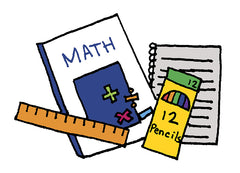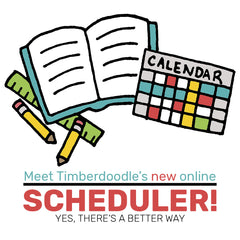And Other Reasons to Use Workbooks With Your Little Guys
When we talk about workbooks for the 5 and under crowd we almost always hear the same thing from certain friendly folks. They thoughtfully respond that “He’s a little young for worksheets. Don’t push him into academics this young but instead just let him ‘be a kid’ for now.” We beg to differ.
Of course, let’s not forget to state the obvious! We agree 100% that there really truly isn’t a big push to get a young child enjoying workbooks. After all, we agree with these friends that we are not here to build a child genius whose incredible academic success was obtained at the expense of his joyful spirit and creative personality. Or, worse yet, advocating that you gear his education around what makes his parents look great.
Workbooks are Blank Walls!
Don’t forget though, that he already loves to create. If you doubt that, give him free reign with markers and watch his masterpiece emerge on the walls! So what’s the difference between the walls and worksheet for him? How do we get him excited about the potential there? Not every child is reluctant to engage with a worksheet for the same reason. Here are a few of the most common scenarios we’ve seen:
The Overwhelmed Student
Some children honestly just are dismayed by the idea of a worksheet or sitting down to work on a workbook page. Our friends have a daughter who loves everything about her worksheet pages but initially freaks out at the idea of sitting down and working on it. This is typically an oldest-child phenomenon, as younger siblings are almost always eager to have their own workbooks just like their older siblings!
If that’s your child, it may be helpful to find some pages that you know he will enjoy once he relaxes, and simply work through one a day as a non-optional activity. The point isn’t to force him to do something too advanced for him, but simply to help him overcome his fears so he can enjoy this new activity!
The Bouncing-On-and-Off-the-Chair Child
Some children, boys especially, just don’t have the attention span or physical ability to sit still or hold a pencil for long enough to do a page. If that’s your child, I’d suggest almost the same thing, but for entirely different reasons. If he has one quick page to do and then is off and running again he will begin to build the muscle memory and attention span he needs without burdening him now with page after page of seat-work. There is a fine-line between forcing him to do something too difficult and helping him build skills. Only you know him well enough to know exactly what that balance is. But pushing for a tiny bit of growth each week will help him develop skills and endurance that leave him free to create and explore!
The I-Don’t-Get-the-Point Kid
Most children are naturally curious and will love solving problems on paper. However, some will do so much better if you take a moment to make a story about the page. Is today’s activity drawing lines from birds to nests? Perhaps these could be “busy mommy birds that went and caught food for baby (child’s name) but now can’t find their way back home. If you don’t draw a line to help each get home, the baby bird will be SO hungry!” Simple? Yes, but extremely engaging to the story-driven child!
Tip 1: Start Short and Sweet
This is a workout for him and you’re not going to begin with a marathon. Just have him do one page (or less) of the most interesting kind for him. Ideally you’ll do it just before the best part of his day. If he knows that as soon as he’s done, it’s off to the park it will help him focus.
Tip 2: Work Through It
Be prepared to take much longer than it “should” to get his work done the first week. Some children may even benefit from hand-over-hand assistance to get the hang of how doable this is. We’re not talking about spending hours at the table, but don’t expect the 2 minute page to take only 2 minutes the first time!
Tip 3: Make it Amazing
Relook at your supplies and worksheets. Are the markers making a horrid screeching noise as they grate across the page? Are the worksheets tediously boring and only covering things he already knows? Or perhaps they are just way too hard for him? Take the time to invent a story about the page too.
Tip 4: Don’t Forget the Goal
You know that once he can enjoy worksheets the whole world opens up to him. He is going to love creating and exploring in ways he can’t do without them. There is a puzzle and mystery to good worksheets and he will love doing them, once you get him going. At the same time, very few skills are limited to worksheets only. Pencil grip can be encouraged with bead mazes, Magnatab and the like. Math can be introduced with Inchimals, and language arts encouraged with First Thousand Words and endless reading times. Phonics could even be introduced with Jumbo Bananagrams if you have the time for that. So don’t be overwhelmed by the learning process here – figure out what works best for your family and do that! We just want to encourage you not to throw out workbooks for little guys entirely. Done right, they add so much fun to the tiny years!
 Skip to content
Skip to content





